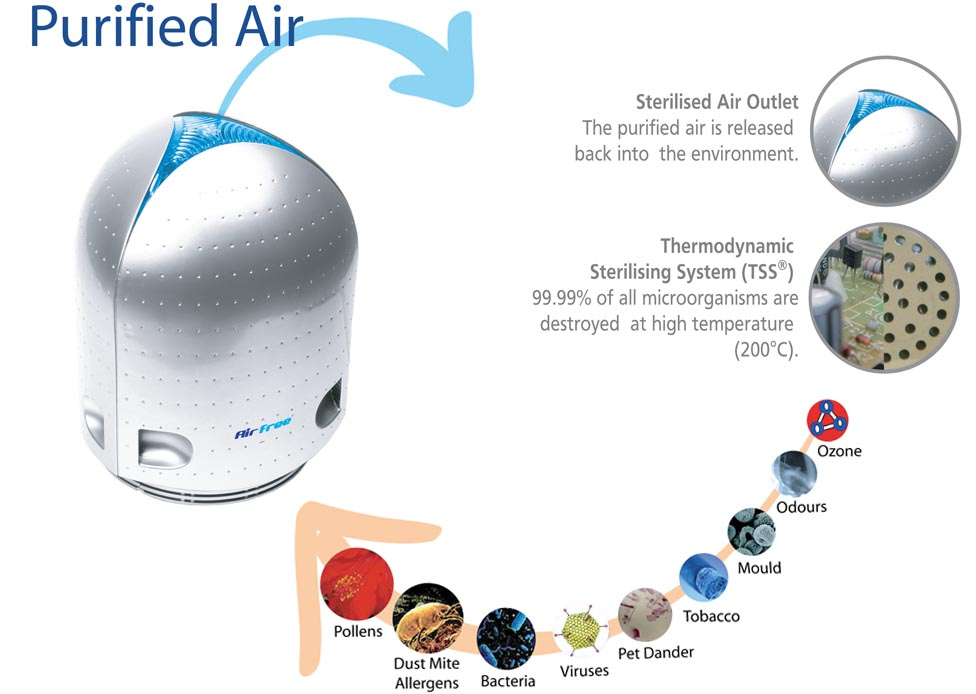Ozone

Unknown dangers
Ozone is an allotropic form of oxygen, consisting of 3 atoms (O3), whose characteristics are: unstable gas, diamagnetic, P.E. -112°C. This gas, which at room temperature is blue and has a characteristic smell, is also a very strong oxidant, reacting more rapidly than O2.
Ozone is reactive and it is able to oxidize metals such as iron, lead and arsenic. Because it is extremely reactive, it can also attack protein, destroy microorganisms, and hinder the growth of plants. It is produced naturally in the stratosphere through the photochemical action of ultraviolet rays on oxygen molecules, bringing benefits.
On the other hand, when found in the troposphere the lowest layer of the atmosphere it is responsible for pollution in large urban centers. The tropospheric ozone is produced as a result of smoke generated by combustion engines and power generation plants.
In fact, industrial emissions and automobile exhaust emit a range of nitrous oxide gases (NOx) and volatile organic compounds (VOC), by-products of gas and coal combustion. Oxygen atoms released by NOx and VOC attack oxygen molecules and form ozone through the action of sunlight.
Ozone generators are sold as air cleaners and intentionally produce this gas, freeing some of it as a by-product of this process. However, high concentrations of ozone react with the organic material inside and outside the body. When inhaled, ozone can damage the lungs, cause chest pain, coughing, shortness of breath, and throat irritation. It can even cause chronic respiratory diseases, worsen diseases such as asthma and bronchitis, and make people more susceptible to respiratory infections.
AIRFREE® PURUFIERS are the only ones that reduce the amount of ozone in the air. They are up to 99% efficient in destroying bacteria, viruses, airborne mold spores, mite and dust allergens, and other airborne pollutants, and they are major allies in increasing the quality of life of people who suffer from allergies.
How do they work?
They dramatically reduce air pollution by burning the microorganisms. As a result, the contaminated air is drawn into the Airfree® ceramic core and destroyed at high temperatures. This air purification cycle is silent, requires no maintenance and is guaranteed by numerous tests.

FAQ
Q: How does Airfree destroy ozone molecules?
A: The weak link is destroyed when exposure to Airfree TSS ceramic core.
Q: Is There Such a Thing as "Good Ozone" and "Bad Ozone"?
A: The phrase "good up high - bad nearby" has been used by the U.S. Environmental Protection Agency (EPA) to make the distinction between ozone in the upper and lower atmosphere. Ozone in the upper atmosphere--referred to as "stratospheric ozone"--helps filter out damaging ultraviolet radiation from the sun. Though ozone in the stratosphere is protective, ozone in the atmosphere - which is the air we breathe - can be harmful to the respiratory system. Harmful levels of ozone can be produced by the interaction of sunlight with certain chemicals emitted to the environment (e.g., automobile emissions and chemical emissions of industrial plants). These harmful concentrations of ozone in the atmosphere are often accompanied by high concentrations of other pollutants, including nitrogen dioxide, fine particles, and hydrocarbons. Whether pure or mixed with other chemicals, ozone can be harmful to health.
Q: The Airfree test shows that it reduces only 26%
A: A scientific test performed in Sweden shows that Airfree destroys up to 26% of indoor ozone each time the air passes through the ceramic core. There are no air purifiers on the market that are able to destroy ozone. Airfree’s revolutionary Thermodynamic Sterilization System is the only technology with this ability.


